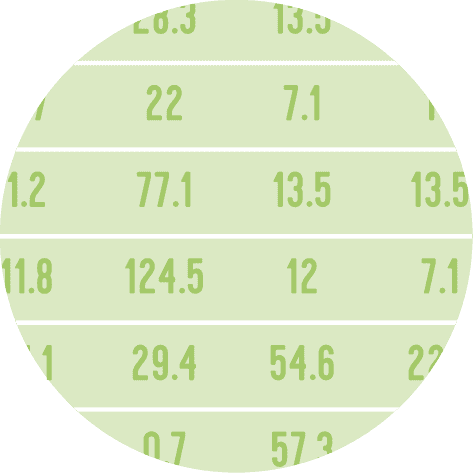Libraries
First, you need to install the following librairies:
- matplotlib is used for creating the slope chart and for customization
- seaborn is used for creating the parallel plot
pandasis used for loading the dataset
# Libraries
import matplotlib.pyplot as plt
import seaborn as sns
import pandas as pdDataset
The data used is a famous dataset where each line represents a country, by year, with various measurements, from Gapminder.
You can find out more about the dataset on this Kaggle post.
To retrieve the data, we download them directly from this github repository.
url = "https://raw.githubusercontent.com/jennybc/gapminder/master/data-raw/08_gap-every-five-years.tsv"
df = pd.read_csv(url, sep='\t')Parallel plot
In the following parallel plot, we show the position of each continent in terms of average for 3 different variables: GDP/capita, life expectancy and population.
However, as these variables are at different scales, it is not possible to have a single y-axis. For this reason, we don't include one, leaving the graph only to tell us which continent has a higher average than another, for each variable studied. If your situation is different, feel free to display the scale.
We still need to normalize our data so that we can represent the variables on a single graph. To do this, we perform a z-score normalization, which consists in transforming our variables so that they have a mean of 0 and a standard deviation of 1.
# Calculate the average values for each continent
average_data = df.groupby('continent')[['gdpPercap', 'lifeExp', 'pop']].mean()
# Normalize the data for better visualization
normalized_data = (average_data - average_data.mean()) / average_data.std()
# Create parallel plot
plt.figure(figsize=(8, 6))
parallel_plot = sns.lineplot(data=normalized_data.transpose(),
dashes=False,
markers=True,
markersize=8)
# Add title
plt.title('Parallel Plot \nAverage GDP, Life Expectancy, and Population by Continent')
# Remove y-axis ticks and tick labels
plt.yticks([])
# Add legend
plt.legend(title='Continent',
bbox_to_anchor=(1, 1), # Shift legend to the right
)
# Display the chart
plt.show()Going further
This article explained how to build a basic parallel coordinates chart with Seaborn.
For more examples of how to create or customize your parallel plots with Python, see the parallel plot section of the gallery.
You may also be interested in creating a parallel plot with pandas or with Plotly.






